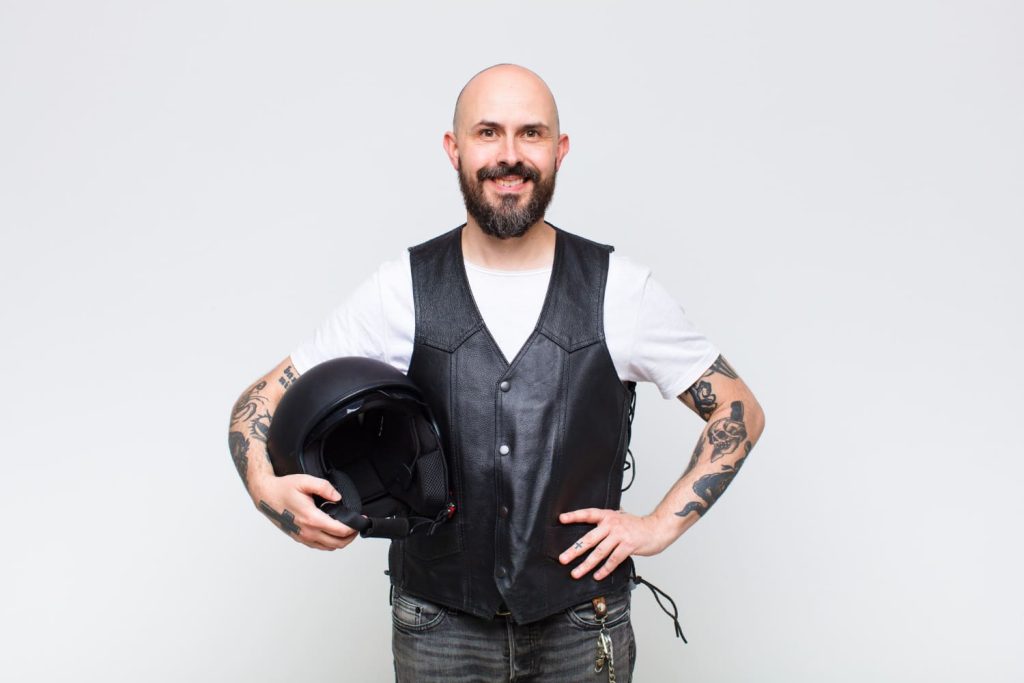
In many ways, belonging to a motorcycle club (MC) and wearing a kutte can be likened to the experience of adhering to a religion and wearing religious garb. The kutte, a vest adorned with patches and insignia representing the club, serves not merely as a piece of clothing but as a profound symbol of identity, loyalty, and belonging. Similarly, religious attire conveys adherence to a set of beliefs, values, and a community. This article explores the parallels between these two forms of identity expression, examining how the kutte of a motorcycle club member holds significance akin to religious garb.
The Symbolism of the Kutte
For members of motorcycle clubs, the kutte is a powerful symbol that embodies their commitment to the club and its values. Each patch on the kutte tells a story—whether it’s the club’s emblem, the chapter name, or personal achievements within the club. The act of donning a kutte is akin to adopting a uniform that signifies belonging to a distinct brotherhood, one that values loyalty, honor, and camaraderie.
Much like religious attire, the kutte is not merely decorative but serves a deeper purpose. It communicates to others within and outside the club who the wearer is, what they stand for, and to whom they belong. This symbolism fosters a sense of unity and identity among club members, much as religious garments do for members of a faith community.
Rituals and Rites of Passage
Motorcycle clubs, like religious communities, often have initiation rituals and rites of passage. These ceremonies mark the transition from outsider to accepted member, creating a deep sense of belonging and commitment. The kutte, bestowed during such ceremonies, becomes a tangible reminder of the member’s journey and acceptance into the club.
In many religions, garments worn during significant ceremonies—such as baptisms, weddings, or ordinations—hold profound meaning. Similarly, the first time a member dons their kutte is a momentous occasion, symbolizing their new identity and responsibilities within the club. This rite of passage underscores the parallels between the two practices, highlighting the transformative power of symbols and rituals.
A Code of Conduct and Shared Values
Both motorcycle clubs and religious communities adhere to a code of conduct and shared values. For MCs, these values might include loyalty, respect, and brotherhood. The kutte, adorned with specific patches, serves as a constant reminder of these principles, much like how religious attire can remind the wearer of their faith’s teachings and moral obligations.
Wearing the kutte is a daily reaffirmation of a member’s commitment to the club’s values, akin to how religious garments can serve as a daily reminder of one’s faith and beliefs. This shared sense of purpose and ethical code strengthens the bonds within the community, whether it’s a motorcycle club or a religious congregation.
A Sense of Belonging and Community
One of the most profound similarities between wearing a kutte and religious garb is the sense of belonging and community it fosters. In both contexts, the attire acts as a marker of inclusion, signaling to others that the wearer is part of a larger, supportive group. This sense of belonging can be incredibly powerful, providing emotional support, identity, and a feeling of home.
For many, the community aspect of motorcycle clubs is as vital as the religious community is for believers. Regular gatherings, group rides, and shared experiences forge strong bonds among members, similar to how religious services, prayers, and community events do for the faithful.